Today I walked beside a canal in Amsterdam, just as any of the thousands of tourists in this city do each day. The difference with the Nieuwe Keizersgracht canal was no other tourists were standing around this specific stretch of canal, looking at Schaduwkade names, the Shadow Wall names.
I have rarely ventured east of the Amstel River on my trips to Amsterdam. Today was a rainy day and I quickly grew tired of all the tourists walking alongside all the familiar canals of the Singel, Herengracht, Keizersgracht and Prinsengracht in the heavily touristed city centre.
I had been in the Rijksmuseum with thoughts of spending hours staring at paintings, but I felt the restless need for steady body movement after the previous day’s flights from California to Stockholm to Amsterdam.
I found myself walking south along the west bank of the Amstel, thinking I might cross a bridge to the east bank and venture south to the InterContinental Amstel. But,changed my mind and instead walked north along the east bank of the Amstel. That made all the difference in my day.
Amstel River Magere Brug (‘Skinny Bridge’ at Kerkstraat)
Magere Brug view. InterContinental Amstel is in distance on left bank with flags seen flying in the stiff breeze.
The Jodenbuurt – Jewish Neighborhood
The Jodenbuurt was established on the east side of the Amstel River when Jews, primarily from Spain and Portugal, moved to Amsterdam following the Treaty of Utrecht (1579), which created an independent Netherlands from the former Spanish Netherlands of the Holy Roman Empire. Religious freedom was embodied in the text of the Treaty of Utrecht – “each person shall remain free, especially in his religion, and that no one shall be persecuted or investigated because of their religion.”
Jews settled primarily on an island on the east side of the Amstel River. Construction of the first synagogue began in 1602. By 1618 the third synagogue in Amsterdam was founded at a time when around 1,000 Jews inhabited the Jodenbuurt.
Amsterdam had around 80,000 Jews at the time of Nazi occupation in May 1940.
Five years later there were only around 5,000 Jews from Amsterdam who had survived the war. Most people are familiar with the story of Anne Frank, one of the Amsterdam Jews who did not survive the concentration camps.
Amsterdam Schaduwkade Shadow Wall
Schaduwkade – Shadow Wall is a memorial created in 2013 with plaques listing names of more than 200 residents of Nieuwe Keizersgracht laid in the stones of the canal bank beside the Hermitage Museum.
These plaques are engraved with names, ages and date of death at a Nazi concentration camp.
Nieuwe Keizersgracht 24
- Marcus Kok 56 jaar 11-12-1942 Auschwitz
- Julie Kok-Vleeshhouwer 55 jaar 11-12-1942 Auschwitz
- Samuel Kok 24 jaar 22-01-1943 Mauthausen
- Jacques Kok 20 jaar 26-08-1941 Mauthausen
Houses with residential addresses of 20, 22, 24 and 26 on opposite side of Nieuwe Keizersgracht canal, Amsterdam.
Nieuwe Keizersgracht 26
- Isaac Bernard Pakter 43 jaar 02-07-1943 Sobibor
- Bluma Dobrysz Pakter-Lemberger 33 jaar 02-07-1943 Sobibor
- Levie Pakter 7 jaar 02-07-1943 Sobibor
- Simon Pakter 5 jaar 02-07-1943 Sobibor
- Sally Pakter 2 jaar 02-07-1943 Sobibor
Nineteen transports arrived at Sobibor from the Netherlands between March and July 1943, carrying 34,313 Jews. In the first two transports passenger trains were used, after the 10 March 1943 cattle wagons were used. …
Of course, given the camps destructive nature, almost all of the Dutch Jews were murdered, only 18 out of the 34,313 Jews survived, most having been selected for labour camps on the Sobibor ramp. The SS administration even encouraged the Dutch Jews to send postcards to Holland, saying they had arrived safely in Poland.
I photographed Shadow Wall plaques along the canal reaching Nieuwe Keizersgracht 74, then the addresses changed to 1 and 3 at the end of the street. This is just one 100 meter stretch of canal houses with Schaduwkade names. Similar deportations happened throughout the streets of the Jodenbuurt.
Nieuwe Keizersgracht, Amsterdam
Jewish World War II 1940-1945 Memorial
As I walked along the next canal Nieuwe Herengracht back to the Amstel River I photographed another lovely drawbridge.
Nieuwe Herengracht canal drawbridge to Amstel River.
I photographed a plaque on the bridge.
Walter Suskind was a German Jew who fled to Amsterdam in March 1938. He was the manager of the Hollandsche Schouwburg (Dutch Theater).
Hollandsche Schouwburg is where Jews had to report prior to deportation to Westerbork transit camp. Walter Suskind used his connections and position with the Dutch Jewish Council to help rescue children by not recording names and removing names from registries. Children were smuggled out of Amsterdam to outlying areas. About 600 children were saved from the death camps. In 1944 Walter Suskind, his wife and daughter were sent to Westerbork. Walter Suskind died in Auschwitz in 1945.


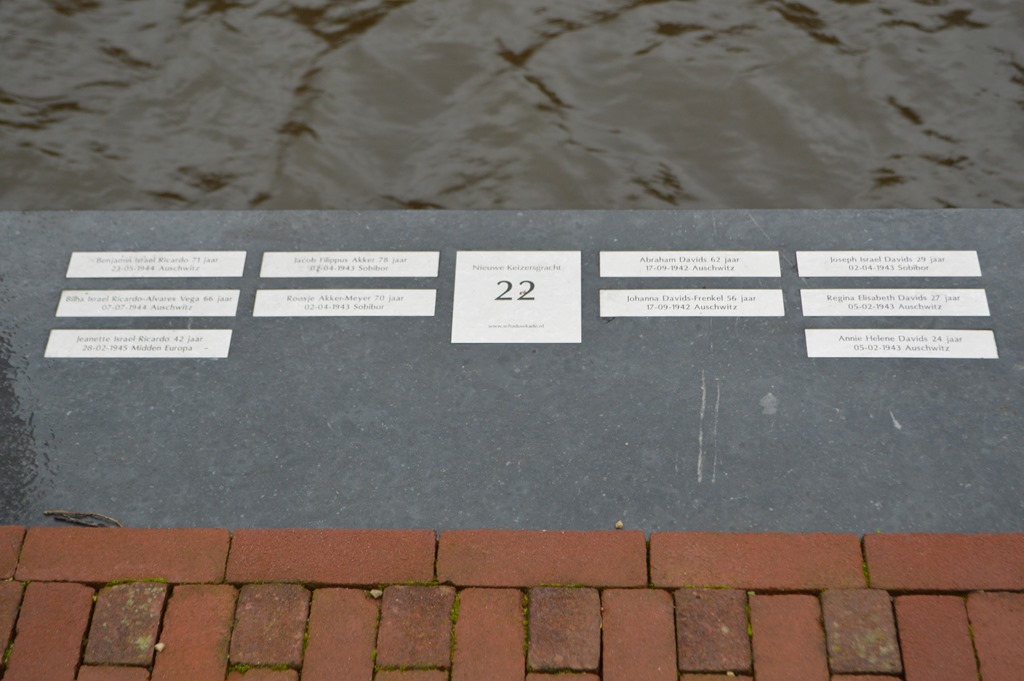
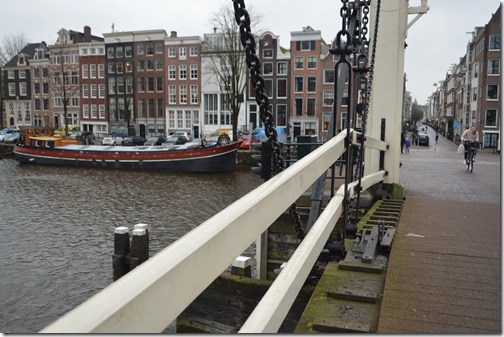
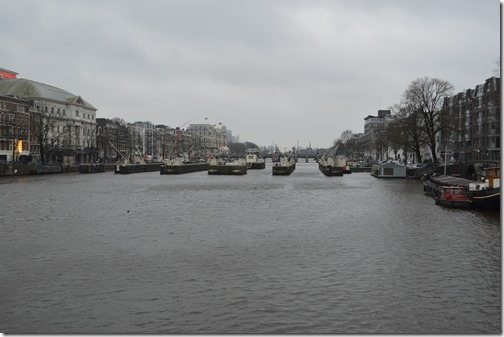
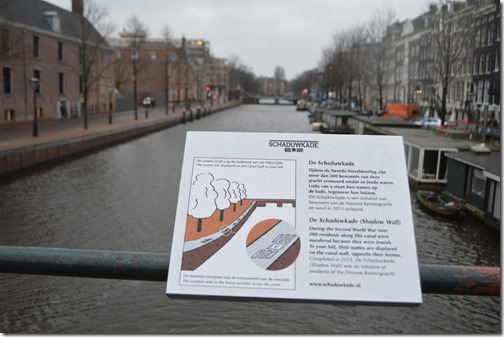

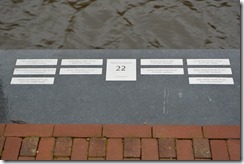
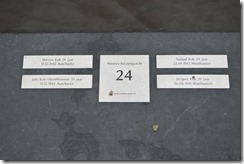
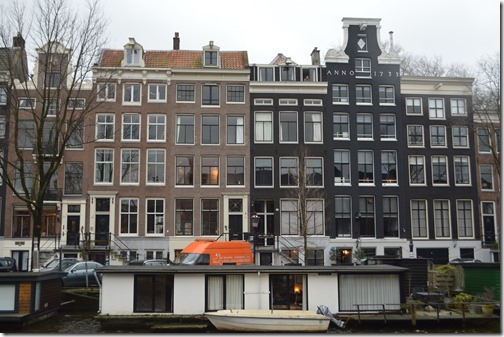
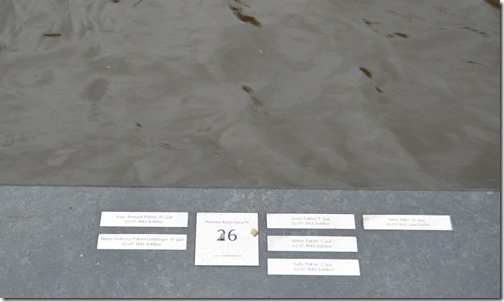
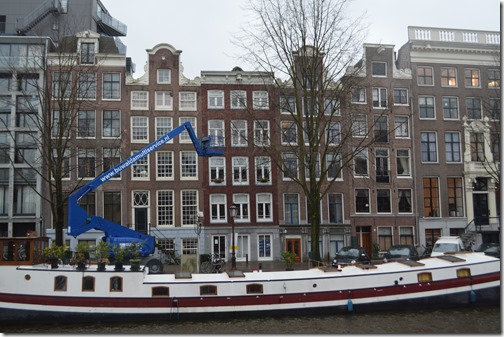
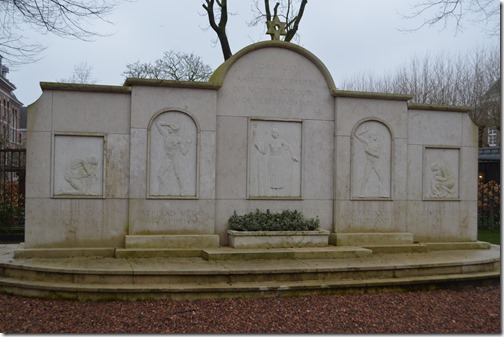

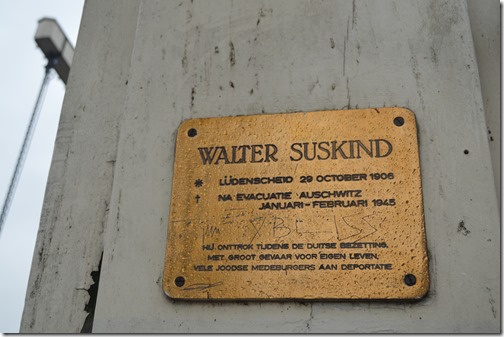
5 Comments
Comments are closed.